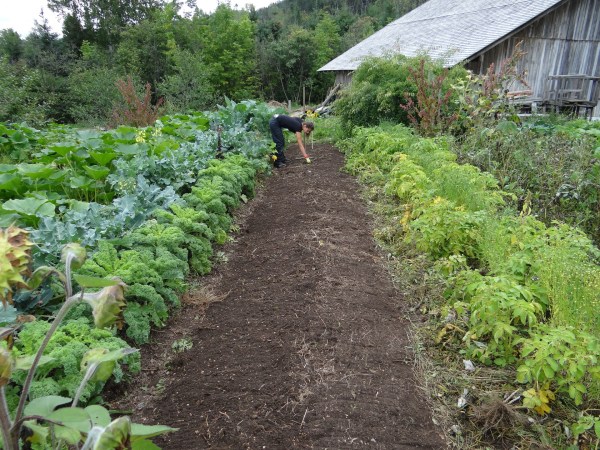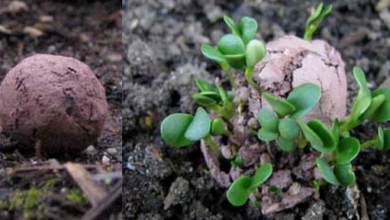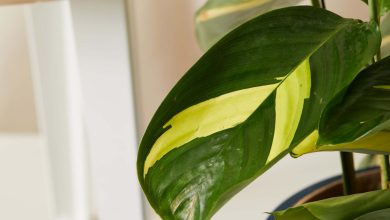Ecological Crop Management: The example of “Sponsor a Tomato”

Today we talk about ecological management. After showing you some of the best photos of Apadrinauntomate, and explaining what it is and how it works in the article « Sponsor a tomato, organic gardens in Comillas (Cantabria), we are going to talk about how organic products are grown in these greenhouses. Ecological crop management is essential to get tasty and healthy vegetables and to keep pests away without using pesticides and other artificial chemicals!

How to do ecological management in the orchard
We are going to see the most practical aspects of ecological management, those that can help you and give you ideas for growing your own organic garden or greenhouse.
Soil maintenance and fertilization
The crops are grown on the natural land itself, and that soil is maintained thanks to a series of tasks that are carried out in the winter months and early spring, before sowing or planting:
- Tillage: the soil must be broken up and aerated but, in accordance with the principles of Ecological Agriculture, it is not advisable to invert its natural structure or turn it excessively, that is why the moldboard is not used (its work affects the ground too deeply, inverting the layers) but a minimum tillage is done with a rotavator.
- Fertilizer: the soil is provided with nutrients and organic matter thanks to a host of activities that Cristian carries out to achieve the most complete and varied fertilization possible: compost, green manures, cow manure, organic mineral fertilizers…
In these photos you can see part of the ecological management of crops. After plowing the land, trenches are made where the fertilizer is incorporated. They will then be covered with a mesh or plastic (see article on Padding or Mulching for orchards) to prevent the proliferation of unwanted weeds and protect the new plants.


composting
The compost is made on the farm itself. In approximately 3 months of composting, Cristian obtains a good fertilizer using the remains of the crops and the grass cut from the corridors of his greenhouses.
If you have read the article How to make homemade compost step by step, you will know that there are several ways to do it, and in the case of Apadrinauntote it is done in a pile or pile outdoors.
“Any tips or tricks for Agrohuerto.com users?” I asked Cristian. He told me that the essential thing to not spoil the compost is to prevent it from rotting. For that it is very important that the air runs through the stack. Trick to achieve this: make the compost heap not directly on the ground but on top of wooden pallets, so that it is ventilated both above and below.
green manures
As we mentioned in the first article, the material used as green manure comes from legumes (broad beans or beans) that are grown in two of the eight greenhouses, in rotation with another six for tomatoes.
Once the beans or caricos are harvested, the plants are cut and that green material is used to bury it and provide organic matter to all the plots and greenhouses of Apadrinauntomate, for the ecological management of crops.
Manure
Cow manure is used to achieve a more complete supply of organic matter. According to what Cristian tells me, they mix the fertilizer directly with the soil in the case of tomatoes, and for lettuce they compost it beforehand. This is an important part of ecological crop management.
Organic mineral fertilizers
As a complement to organic fertilization, ecological industrial fertilizers are used (but ecological, always ecological!) that supply some specific deficiencies of these crops or favor their development. To acquire them, Cristian usually goes to CASTILLO ARNEDO, where the purchase of the products is linked to advice and control of the results. From Apadrinauntomate they recommend:
• CUAJASAN. It is a liquid fertilizer that is applied to the soil together with the irrigation water when the tomato is in bloom. It has phosphorus, nitrogen, magnesium, boron and molybdenum. Very useful to improve fruit set (transition from flower to tomato) and promote fattening. In addition, Mb helps to better assimilate nitrogen from the soil.
• SALISAN. It is a product based on calcium and sugars that favors the absorption of nutrients.
• CORRECTOR OF SHORTCOMINGS. When necessary, Cristian uses a mineral fertilizer that contains copper+iron+potassium+magnesium.
Control of pests and diseases
In the ecological management of crops we cannot use conventional chemical phytosanitary products. As we have seen in the article Control of Pests and Diseases, it is essential to prevent and use several combined methods against them, that is, an integrated fight. Here are some of the methods that Cristian told me that they use in their greenhouses to prevent and combat pests and diseases:
- Mildew and Oidium: To prevent fungi from appearing, it is very important, as Cristian told me, proper pruning that favors aeration. They also use CUPRÍN, an ecological phytosanitary product based on copper (copper is a good ally to prevent fungus in the garden). This product is foliar, so it is applied diluted in water and sprayed on the plants (in one of the photos in the other article you can see Cristian performing the treatment).
- Whitefly – They use a predatory mite called Amblyseius swirski, which also feeds on Thrips.
- Against the Trips that attack the pepper, sprinkler irrigation turns out to be an effective method of fighting pests: these «little bugs» do not feel comfortable and move away from the crop.
- Aphids: ladybugs as predators. It is also very important to keep ants at bay (as you may have read in the article on Aphids), because their presence encourages aphids to settle on our plants.
Other “secrets” of organic garden management
Bumblebees are used to favor tomato pollination. These are acquired in a kind of boxes that open and are left inside the greenhouses, where the bumblebees come and go freely.
This topic of pollination is very interesting, and even more so if we talk about Organic Farming! We will dedicate an article to it soon.
If you liked this post about ecological management, share and rate it (You can follow us on Facebook and Twitter). And if you want to know more about Sponsor a tomato you can visit their website and Facebook (They also have a Google+ profile: “Verduras el Moro”, where you can find their phone number).


![Photo of Indoor Plant Care: [Soil, Humidity, Pruning and Problems]](https://www.complete-gardening.com/wp-content/uploads/2022/08/indoor-plant-care-soil-humidity-pruning-and-problems-390x220.jpg)

![Photo of Prune Kumquats: [Importance, Season, Tools, Considerations and Steps]](https://www.complete-gardening.com/wp-content/uploads/2022/08/prune-kumquats-importance-season-tools-considerations-and-steps-390x220.jpg)